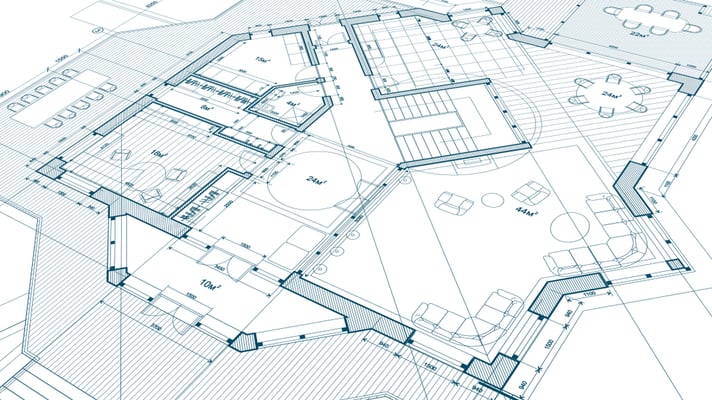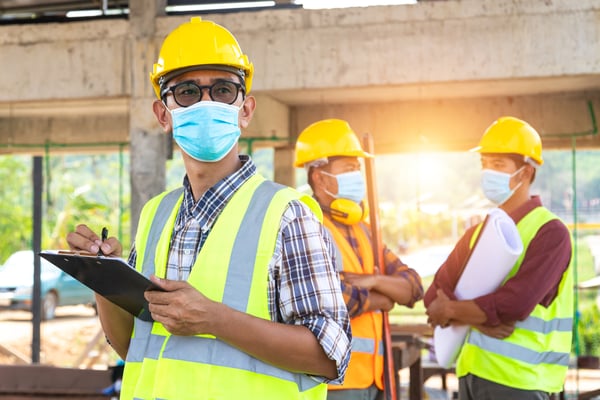Mechanical, electrical and plumbing systems make building interiors suitable for human occupation over long periods. To be approved, a MEP project must meet all building codes required by local governments. However, there are many ways to improve designs beyond the minimum requirements.
Design decisions have an impact on all phases of the building's life cycle: construction, operation, maintenance and renovations. Ownership costs can be greatly reduced with smart decisions during the design phase, while creating a better environment for building occupants. In the case of real estate developers, whose objective is to rent or sell spaces, design can also provide a competitive advantage.
Get a professional MEP design for your building: reduce costs and improve well-being.
This article will discuss five ways MEP engineers can go beyond codes, providing added value to building owners.
1) Energy Efficiency and Water Conservation Measures

Electricity, gas and water bills become a permanent monthly expense once a building begins operating. In the case of large commercial and industrial buildings, these expenses can easily reach six figures per month. However, MEP engineers can add design features that reduce water and energy use, which has the potential to save thousands of dollars per month.
Each building is unique, but some measures are effective in almost all projects:
- LED lighting saves between 30 and 90 percent depending on the type of lighting being replaced.
- HVAC equipment with high energy efficiency rating.
- Plumbing fixtures with the US EPA WaterSense label.
- Electric motors with NEMA Premium Efficiency (IE3 or IE4 when using IEC standards).
Water conservation and energy efficiency measures have a faster return on new projects. This is because they only represent an increase in cost, in relation to the equipment that would be installed anyway. On the other hand, if these measures are left as a future update, some types of components and equipment are purchased twice.
2) Indoor air quality and well-being

According to the US EPA, indoor air is 2 to 5 times more polluted than outdoor air, and we spend 90% of our time indoors. Many air pollutants have little or no effect on rapid exposure, but can lead to serious health problems when left unchecked for long periods. For example, a Harvard study found that mortality from COVID-19 increases in places with high levels of particulate matter.
LEED certification works with the broader concept of indoor environmental quality (IEQ). This includes indoor air quality, but also aspects such as anti-glare lighting, thermal comfort and acoustic comfort. More recently, the WELL Building Standard introduced design guidelines that focus on individuals, and building performance plays a supporting role.
In the wake of the COVID-19 pandemic, ASHRAE published detailed guidance for improving air quality in many types of buildings. Their general recommendations include increased ventilation with outside air, upgrading filters to at least a MERV 13 rating, and implementing ultraviolet germicidal irradiation.
For building owners planning to use their projects, IAQ can increase productivity by keeping employees healthy and productive. For property developers, IAQ can help attract tenants by providing a marketing advantage.
3) Optimizing the Layout of the Construction System

Building performance is important, but owners also want reasonable costs. When MEP installations have a poorly planned layout, their cost can increase drastically due to pipes, ducts, cabling, conduits, etc. unnecessary. Skilled labor costs also increase as more materials are being installed.
Change orders during the construction phase also make projects more expensive than necessary. They are typically needed when equipment or other components have conflicting locations or specifications. Building Information Modeling (BIM) is a powerful tool for preventing these change orders, through a process of detecting and resolving conflicts in the design phase.
Ideally, MEP installations should use minimal materials and labor hours without compromising performance. This is difficult to achieve with conventional 2D drafting software, especially in areas with many components close together. However, the optimization and conflict detection process becomes much more efficient with BIM.
4) Designing the Building for Construction

Water conservation, energy efficiency and an ideal layout can significantly reduce ownership costs. However, design engineers must also consider the construction phase when modeling the project. Conflicts involving locations and specifications are evident, but some conflicts affect workflow.
Architects and engineers must ensure that layouts and installation details are practical for contractors, considering how workers will deploy equipment and materials. Good design also considers that there are many subcontractors involved and that construction documents contain clear instructions to reduce interference.
5) Designing the Building for Maintenance

A good design not only simplifies construction, but also maintenance. Once equipment and components are installed and operational, they must be accessible for routine inspections and part replacements. The building design must also consider that large equipment may eventually require replacement, and the layout must allow for this procedure. For example, a building owner may plan to install higher efficiency boilers and refrigerators within 10 years.
A digital twin is a very powerful tool for building maintenance as it reflects the actual condition of all MEP systems. Instead of working with physical documents that deteriorate over time, the maintenance department can have access to a virtual replica of the building. This is very useful for tracking component wear and planning maintenance tasks.

